125 Years of serving New Zealand and the Antipodes
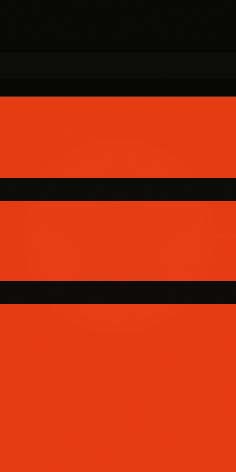 The splendid and beautiful bronze green hulls with a yellow band, and the red and black funnels, of the many passenger liners of the Union Steamship Company of New Zealand (USSNZ) were seen all across the Antipodes. The company was known as the ‘Southern Octopus’ in New Zealand, its tentacles reaching far out to Canada, United States of America, Australia, India, Pakistan, Malaysia and Indonesia.
The splendid and beautiful bronze green hulls with a yellow band, and the red and black funnels, of the many passenger liners of the Union Steamship Company of New Zealand (USSNZ) were seen all across the Antipodes. The company was known as the ‘Southern Octopus’ in New Zealand, its tentacles reaching far out to Canada, United States of America, Australia, India, Pakistan, Malaysia and Indonesia. 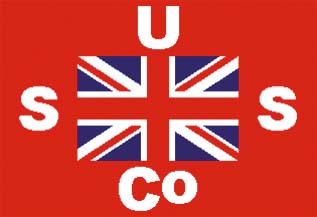 It owned no fewer than 350 ships over a 125 year period between 1875 and 2000, many of which were employed on a plethora of coastal New Zealand services serving both the North Island and the South Island. The vast majority of the fleet were given interesting Maori names, and those on Australian services had Australian aboriginal names.
It owned no fewer than 350 ships over a 125 year period between 1875 and 2000, many of which were employed on a plethora of coastal New Zealand services serving both the North Island and the South Island. The vast majority of the fleet were given interesting Maori names, and those on Australian services had Australian aboriginal names.
Early Beginnings
James Mills (1847-1936) grew up in Dunedin and the fifteen mile long Otago Peninsula in the southern part of the South Island of New Zealand. He was the third son of William Mills, the Collector of Customs at Dunedin. He joined John Jones in 1868 as a clerk in the running of the Harbour Steam Company, based at Otago but operating four paddle steamers, a brig and two schooners from Dunedin in the coastal South Island trades. When John Jones died a year later, James Miles took over as Manager and began to purchase newer and better steamers for the company e.g. Maori of 151 grt and Bruce of 335 grt. They took part in the gold rush of the late 1860s in the hinterland above Dunedin, with Dunedin becoming the foremost commercial centre of New Zealand at that time.

Dunedin only had a population of two thousand at this time, with few people living in the bare hills of the Otago Peninsula. Taiaroa Head was the first sight of land at the head of the peninsula for the Scottish emigrants, exiles and their families. The beautiful natural harbour was quickly protected by six inch guns of a special type manufactured by Armstrong of Newcastle upon Tyne. These guns are still in working order today and cannot be seen by approaching warships, but in action assume an elevated position, fire and then recoil to their lower hidden position in their pits.
The gold saw Dunedin prosper with interesting and diverse architecture in its buildings, beautiful parks and gardens. The Scottish pioneers were predominant amongst the first settlers, mixing with the indigenous Maori population and the Chinese gold miners. The nearby harbour of Port Chalmers, only ten miles from central Dunedin, was crowded with sailing ships and small early steamers, with half of the sailing ships owned by ‘Paddy Henderson’ and his Albion Shipping Company of Glasgow. James Mills tried to set up a new shipping company in March 1874 with the aim of serving the whole of New Zealand and with connections to Australia and Tasmania. Despite many attempts to raise capital locally, he took passage to Glasgow and met James Galbraith, manager of the Albion Shipping Company, and Peter Denny of the shipbuilding Denny family of Dumbarton. Peter Denny offered to build two steamers with an investment of £20,000 provided a new limited liability company was set up in Dunedin.
New Zealand Passenger Services
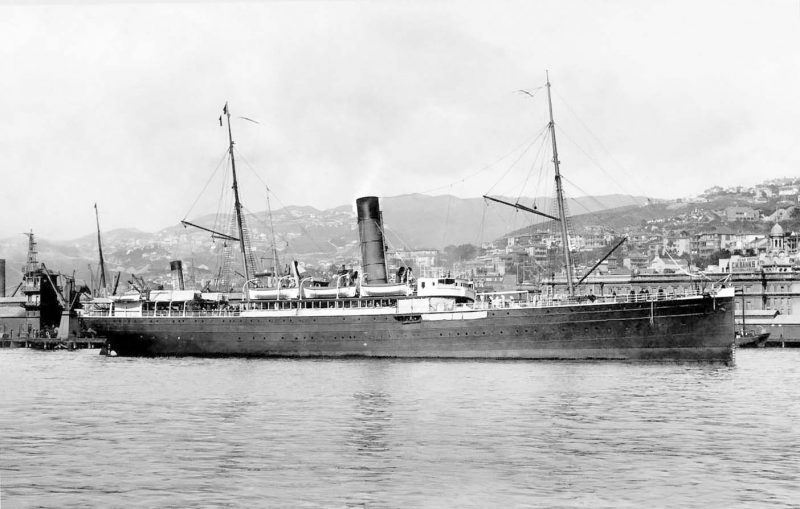
The USSNZ was formed in Dunedin on 1st July 1875 by James Mills and a group of Dunedin shareholders, but crucially included Peter Denny, the Dumbarton shipbuilder, and James Galbraith, manager of Patrick Henderson’s Albion Line which was predominant in the Great Britain to New Zealand trade. James Mills was now aged 28 years, and subscribed £20,000 of Mills family money along with £24,000 from Peter Denny and other Glasgow investors, £30,000 from the Harbour Shipping Company and £7,000 from families in local ships chandlers’ businesses. The remaining £19,000 of the £100,000 issued capital was obtained via a bank loan and mortgages on the first two Denny built steamers, Hawea and Taupo of 721 grt. The new steamers were big enough to not only serve in the New Zealand coastal trades but also to Australia and Tasmania as well. USSNZ had a nominal capital of £250,000 in £10 shares, of which £100,000 was issued, with James Mills appointed as Managing Director, a position he was to hold until 1913, with (Sir) George McLean, a local businessman, appointed as Chairman. In its first year, USSNZ concentrated on coastal services, and took over a major coastal rival, the New Zealand Steam Shipping Company, formed in 1862.
An aggressive take-over strategy was pursued by James Mills with six shipping companies and their vessels taken over by 1885 to give a fleet of 28 ships. The Black Diamond Line was purchased for £81,000 together with the important Koranui coal mine, supplier of bunker coal to USSNZ, and eight sailing ships and steamers. The Koranui coal mine was sold two years later for £33,000 to the Westport Coal Company of Dunedin, but USSNZ took over their three colliers in Kawatiri, Orowaiti and Wareatea, engines ‘midships sisters of 556 grt. The company services now included both the east and west coasts of New Zealand starting at Port Chalmers, and an intercolonial service in 1877 from Port Chalmers to Onehunga (Auckland) and Sydney (NSW).
A fleet of 55 steamers was being operated at the turn of the century in 1900 with another seven competing shipping and coal companies taken over during the fifteen years from 1885. The nickname of the ‘Southern Octopus’ had not been lightly given to the company, as many competitors found out when the eight tentacles of the company absorbed them. Steamship losses were quite high at this time, with twenty one USSNZ owned steamers lost from 1875 to 1910, including the former G. & J. Burns steamer Penguin of 824 grt built in 1864 and purchased in 1879 to give thirty years of service until she was wrecked off Cape Terawhiti on 12th February 1909 while en route from Picton to Wellington. The coasts of North Island and South Island can be wild with difficult access to many ports e.g. Lyttelton surrounded by very sharp volcanic rocks, during savage storms.
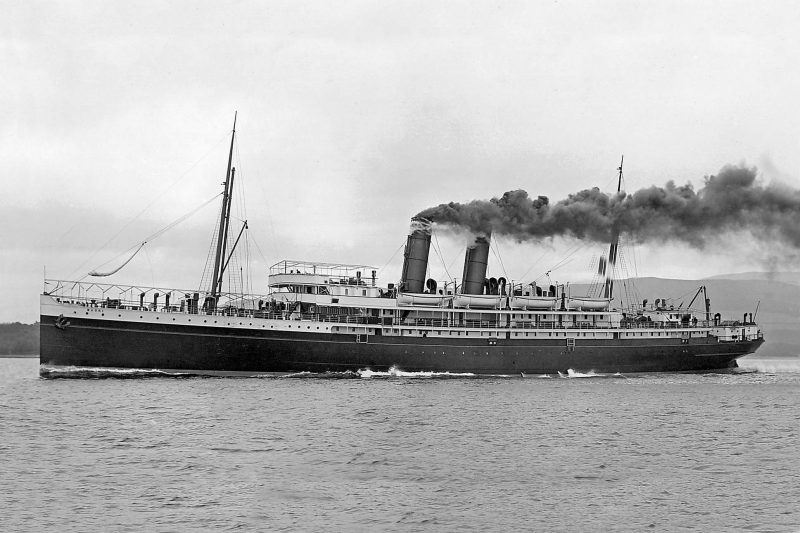
The Lytttelton to Wellington, New Plymouth, and Onehunga passenger trade was operated from 1883 by the new coastal steamer Takapuna of 930 grt with accommodation for two hundred passengers. Onehunga is situated on a natural harbor just to the east of Auckland, with Takapuna taking 35 hours to reach Lytttelton. The modern railway line heading south from Auckland through North Island finally reached Wellington in 1908 to end this service.
The important passenger link to Lyttelton from Wellington began in 1895 when Penguin took over the route, moving up to a frequency of three sailings per week a year later. In 1897, Rotomahana of 1,727 grt replaced Penguin, followed by Rotorua of 926 grt on the route until she was sold off in 1902. A parliamentary inquiry into the route in 1898 reported that a second ship should be added to the route from 1899 during the summer season, with a daily summer service a year later except on Sundays. The route moved to a daily service all year round in October 1905 using Rotomahana and Pateena 1,212/83, with the latter replaced by the end of that month by Mararoa 2,598/85 on the overnight sailings.
The service was taken over on 19th November 1907 by the splendid new twin funnelled passenger steamer Maori of 3,399 grt with accommodation for 553 passengers in two classes as the first overnight connection between the islands. She was completed by the Denny yard at Dumbarton and was powered by three Parsons steam turbines to give a service speed of twenty knots. She was given a bow rudder for manoeuvrability, and her after hold area could be converted to carry fifty more Second Class passengers in high season. Maori was partnered by Rotomahana at first until Mararoa was drafted in again in 1908.
Maori was joined by an almost similar but slightly larger sister Wahine of 4,436 grt in July 1913 with accommodation for 588 passengers in two classes with a crew of 110, again from the Denny yard at Dumbarton. Wahine had watertube boilers to give better combustion of the stocks of Australian coal, and her open main deck could be enclosed in high season to carry an extra 82 First Class and 178 Second Class passengers when needed. Wahine saw extensive military service as a fleet messenger and minelayer at Gallipoli and the North Sea and English Channel, while Maori continued to operate the express overnight service during World War I alongside Mararoa. Wahine was reconditioned by her builder after the war and returned to Wellington on 17th February 1920 to resume her service with Maori. The two near sisters were converted to oil burning during 1923/24, but continued their express service until the new twin funnelled Rangatira of 6,152 grt arrived at Lyttelton on 3rd November 1931 from the Barrow yard of Vickers Armstrong Ltd. Maori was relegated to the status of relief ship from this time.

The quiet and smooth running of the turbine powered Rangatira was much appreciated on overnight sailings by her 716 passengers in two classes, with the important link between the North and South Islands rebranded as the ‘Steamer Express Service’ in 1934. Rangatira was fast and set a speed record of 21.24 knots taking only eight hours and eight minutes on one voyage in 1939. The arduous war service of Wahine from 1941 to 1945 saw Maori and Rangatira operate the route during the war, and in 1946 Maori was sold to Shanghai owners after a career of almost forty years, with Wahine replaced at the beginning of 1947 by the new turbine steamer Hinemoa of 6,911 grt from the Barrow yard of Vickers Armstrong Ltd. Wahine was later wrecked on 15th August 1951 in the Arafura Sea while transporting troops to the Korean War.
Hinemoa was a one class ship with accommodation for three hundred passengers plus a variable number of deck passengers during the summer season. She was partnered by the new Maori (2) of 7,480 grt from the Walker Naval Yard on Tyneside of Vickers Armstrong Ltd. Maori had accommodation for 790 berthed passengers and arrived for the first time on 15th November 1953 at Wellington to begin her eleven hour voyages to Lyttelton. Members of Parliament and businessmen travelled from the South Island port of Lyttelton to the parliament at Wellington and were usually given the best berths. Rangatira then operated the Picton to Wellington service, with Maori calling in to Picton to pick up her passengers on Christmas Day 1959 after Rangatira had run aground. Maori was able to sail at her normal time of 2000 hours at Wellington after this episode, and was only a few minutes late in getting underway back to Lyttelton.
In 1965, Rangatira was laid up with Maori converted to ro-ro mode from her first sailing with cars on 16th December 1965. The new streamlined Wahine (2) of 8,944 grt entered service on 1st August 1966 after a fast passage from her Clyde builders at the Fairfield yard at Govan. She had accommodation for 931 berthed one class passengers and was assisted in berthing by a bow rudder. She sailed from Lyttelton at her normal time of 2015 hours on 9th April 1968 but ten hours later she ran aground on Barretts Head at the entrance to Wellington in the teeth of the winds of the worst storm ever to hit New Zealand. She fell on her side at 1420 hours just outside the main channel with 51 of her passengers drowned just a few miles from her Lambton Quay terminus in Wellington. The view from Mount Victoria behind Wellington would have given a grandstand view of the stricken Wahine, which had to be cut up in pieces over many months to remove the wreck.
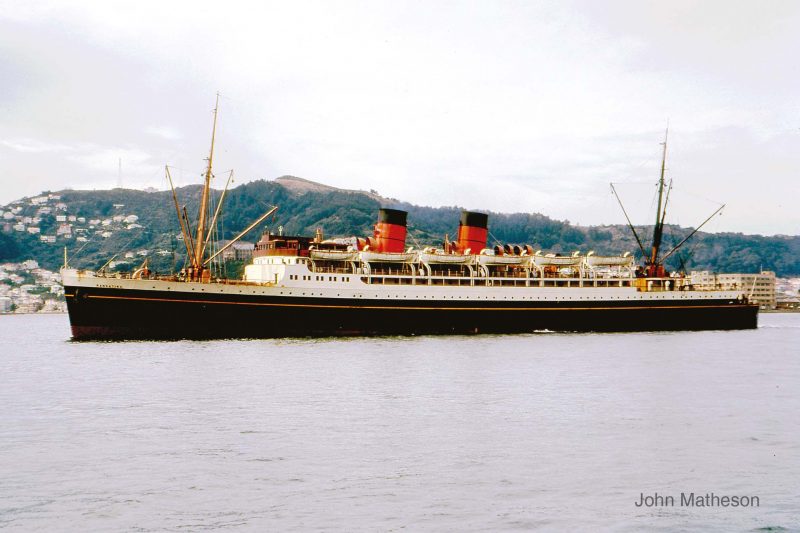
The unlucky Wahine (2) was replaced by Rangatira (2) of 9,387 grt on her arrival at Wellington on 18th March 1972 after sailing from the Wallsend shipyard of Swan Hunter Shipbuilders Ltd. She had accommodation for 769 passengers in 335 cabins on her overnight sailings, but her total passenger complement moved up to 1,600 passengers to include deck passengers in summer. She had a service speed of 21 knots from twin steam turbines and twin propellers and could load two hundred cars via her stern ramp and two side doors. However, after only two years service, USSNZ ended their Lyttelton to Wellington service at the end of 1974, with Rangatira (2) then chartered to the Ministry of Transport and Maori of 1953 sold off for a projected Hong Kong to Taiwan that never materialized, and she was towed from Wellington on 19th January 1974 for the scrapyard at Kaohsiung.
On 15th September 1976, Rangatira (2) was withdrawn by the Ministry of Transport from service, and sailed for Falmouth for a variety of duties including Falklands War service at Port Stanley and as a Mediterranean ferry for Greek owners from 1986 until she was broken up in 2005 in Turkey under the name of Alexander the Great. It is interesting to note that the important link between the North and South Islands was run for almost seventy years from 1907 by two vessels named Maori (the Man), two vessels named Wahine (the Woman), two vessels named Rangatira (the Chief), and one vessel named Hinemoa (the Daughter in the Maori language).
The USSNZ shorter route from Wellington to Picton had been operated by the steamer Wainui with accommodation for 180 people from 1886 to 1925, and then by the new twin funnelled Tyne built Tamahine of 1,989 grt with accommodation for 624 passengers from December 1925 until the last USSNZ sailing on 11th August 1962. Tamahine was partnered by Rangatira in the final years of the service until Rangatira was towed away from Wellington on 25th October 1967 to Hong Kong for breaking up. The service was taken over by the State owned NZ Railways and the new ferry Aramoana and manned by a USSNZ crew.
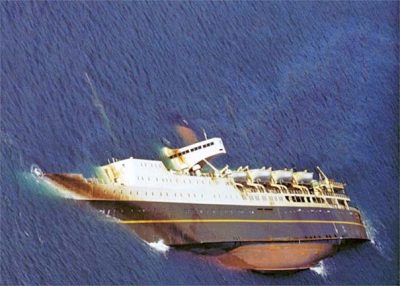
Today, the Interislander fleet of passenger, car and freight ferries takes just three hours from Picton to reach Wellington on five return voyages per day. This is one of the most scenic ferry voyages in the world, with fantastic views of Marlborough Sound and of the upper reaches of Queen Charlotte Sound. The maritime history of New Zealand at Picton is represented by the Australian convict ship Edwin Fox, built as an East Indiaman clipper in 1853. This ship is preserved in a dry dock beside a purpose built museum to act as an important link back to the era of colonial settlement in both New Zealand and Australia in the early 1850s. Three Interislander ferries operate, Aratere (Maori for ‘quick path’) of 12,596 grt built in 1998 by Astilleros Barreros in Vigo in Spain, and lengthened by thirty metres in 2011 with accommodation for 670 passengers and 230 cars, Kaitaki (Maori for ‘challenger’) built as Isle of Innisfree at Rotterdam in 1995 with accommodation for 1,350 passengers and a lane length of 1,780 metres for cars and trucks, and Kaiarahi (Maori for ‘leadership’) and the former Stena Alegra built as Dawn Merchant for Cenargo in 1998 with accommodation for 520 passengers and 525 cars and 65 trucks. A competitor, BlueBridge Ferries, runs ‘Visentini’ type ro-paxes over the same route.
New Zealand Coastal Cargo Services
The coastal general cargo trade of USSNZ was run by vessels of the company and the many competing cargo lines taken over by the ‘Southern Octopus’. The USSNZ had reached its greatest size of 82 ships during the period from 1914 to 1920 with only thirty of these being passenger vessels of over 3,000 grt, and three quarters of the fleet having Maori names beginning with letters ‘K’ for single deck cargo ships, ‘M’ for passenger vessels, and ‘W’ for shelter and two deck cargo ships. The wharf at Oamaru on the east coast of South Island during the inter war years was busy with USSNZ cargo ships such as Kanna and Waipiata discharging factory goods from Auckland and Wellington and loading flour and lime for the return voyage. The wharves at the west coast South Island ports of Greymouth and Westport were busy loading coal into USSNZ colliers, including the twin hold motor coaster Kahika of 1,500 dwt completed by Henry Robb Ltd. at Leith in 1938 and equipped with four derricks of ten tonnes capacity, two derricks of seven tonnes capacity, and a heavy lift derrick of twenty tonnes capacity. A new ‘K’ class was built from 1946 onwards by Henry Robb Ltd. for New Zealand coastal cargo services.
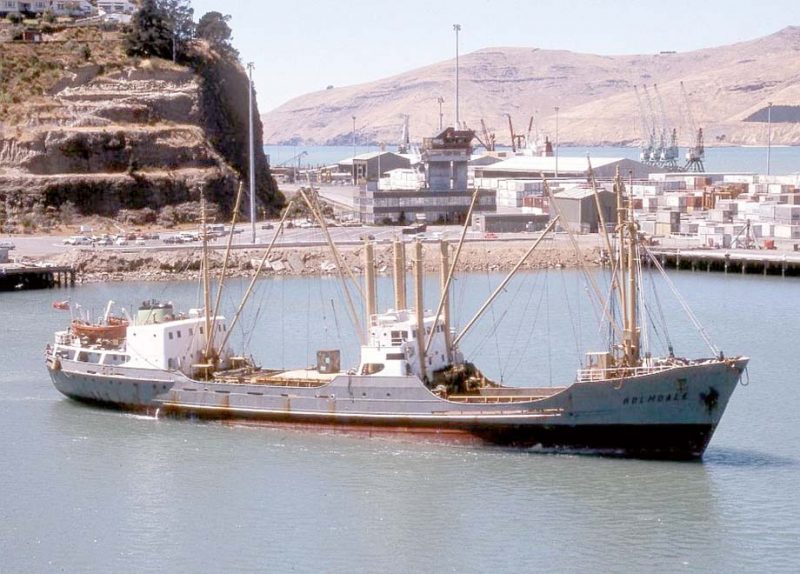
The Holm Shipping Company was founded by Capt. J. F. Holm in the 1870s, with later many coasters owned with ‘Holm’ prefixes to their names e.g. Holmwood. USSNZ first acquired a controlling financial interest in the company in the 1930s. The coasters Port Waikato, Port Whangarei and Port Tauranga were chartered by Holm & Company from the Watchlin Line, which was sold to USSNZ in 1948 with Port Tauranga renamed Kopua and Port Waikato remaining on charter to Holm & Company. The Holm Shipping Co. Ltd. was managed by USSNZ from 1st March 1972, along with the dry cargo coasters of the Canterbury Steam Shipping Company and Richardsons & Company, which Holm already managed.
The coaster Holmdale of 911 grt was completed in 1961 for the Holm Shipping Company by the Bodewes yard in Holland for coastal New Zealand services, particularly the supply of the Chatham Islands from Lyttelton. This service ended in September 1990, and Holmdale was briefly owned by USSNZ for a few months until she was sold on to the Celtic Pacific Shipping Ltd. of the Cook Islands on 10th January, and renamed Celtic Kiwi. However, her last voyage began in October 1991 when she loaded a full cargo at Auckland for Norfolk Island. Water entered her number one hold and she sank on 27th October some 300 kilometres northwest of the North Cape of New Zealand, her crew being fortunately rescued. The Northern Steamship Company operated the Hong Kong built ro-ro Seaway Princess from her commission in 1967 until her sale to Holm & Company at the end of 1969 when she was renamed Holmlea. She began a five year charter to USSNZ for the same service between North and South Islands on 5th January 1970 as Seaway Princess.
The ro-ro cargo era with lorries and trailers was begun in New Zealand waters when the USSNZ ro-ro freighter Hawea was delivered by the Taikoo yard in Hong Kong in October 1967 as a freight ferry for the Auckland to Wellington, Lyttelton and Dunedin service, and she operated for ten years until sold to the New Zealand Government. A sister to Hawea was completed by the same yard as Wanaka in 1970 and was given a bulbous bow to give her an extra knot in speed to bring the North to South Islands ro-ro service up to weekly. She was sold off to Greek owners in 1977 with chartered ships taking over the service.
Australian Passenger And Cargo Services
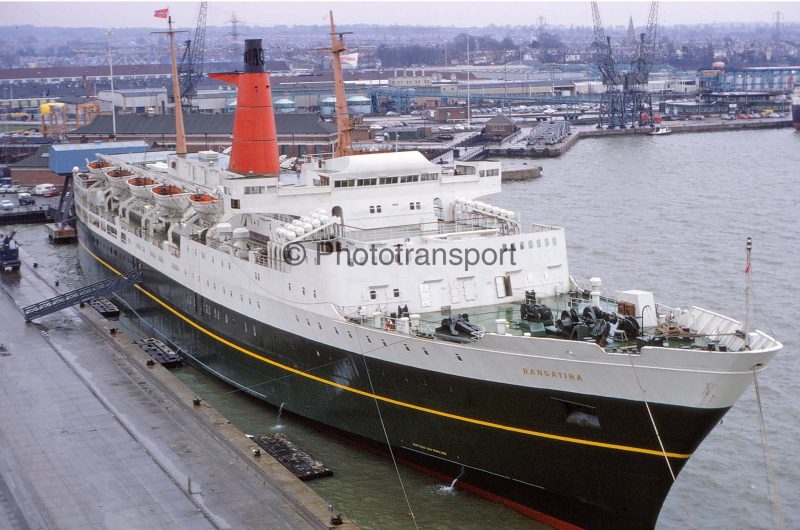
An expansion in the Bass Strait and Tasmanian services to offset the equally progressive Huddart, Parker & Company of Melbourne occurred in 1891 with the purchase of the Tasmanian Steam Navigation Company for £200,000. This company had services from Sydney and Melbourne to Launceston on the river Esk, and Victoria Dock in Hobart, and from Melbourne to Strahan on the west coast of Tasmania, Burnie and Devonport on the north coast, and brought with it no fewer than eight steamers, Corinna, Flinders, Flora, Mangana, Moreton, Oonah, Pateena and Talune plus several coal hulks that were stationed at suitable ports. The steam coaster Australia 459/84 was one of four small coasters that joined the Australian services when two Australian coastal trading companies were acquired in 1896.
The Commonwealth of Australia was inaugurated in 1901 with their first Act being the White Australian Policy, where immigration was strictly restricted to British and European arrivals with a spoken and written examination in English before being allowed into the country, an Act that was only overturned many years later. The competition between the two great rivals, USSNZ and Huddart, Parker Ltd., led to the formation of a jointly owned company in December 1921 as Tasmanian Steamers Pty. Ltd. for a Melbourne to Hobart service. Loongana of 2,448 grt with accommodation for 382 passengers in two classes, a Denny product of 1904, and Oonah of 1,757 grt began the service for USSNZ on 1st January 1922 along with Nairana of 3,000 grt completed in 1917 for Huddart, Parker Ltd.

The Australian Coastal Shipping Commission in 1946 began to give preference to Australian shipping to the detriment of the USSNZ, and built up a big State owned fleet for the second time in their history. The Australian National Line (ANL) was formed on 1st January 1957 to operate a fleet of forty ships, with State protection for the next twenty years on the important Bass Strait route from Melbourne to Devonport. The USSNZ involvement with Australia to Tasmania passenger services ended in 1959 when the new ANL ro-ro passenger ferry Princess of Australia entered service. The twin funnelled passenger steamer Taroona of 4,300 grt and completed in 1935, and cargo ship Tatana 1,396/55, of Tasmanian Steamers Pty. Ltd. were withdrawn. Taroona was built by Alexander Stephen & Sons Ltd. at Linthouse on the Clyde, and had her topsides accommodation built of special quality steel, with an electrically welded rudder, and was propelled by six steam turbines with steam raised in three Yarrow boilers to give a service speed of eighteen knots. She had accommodation for 483 passengers in two classes with a crew of 85, and a cargo capacity of 53,136 cubic feet.
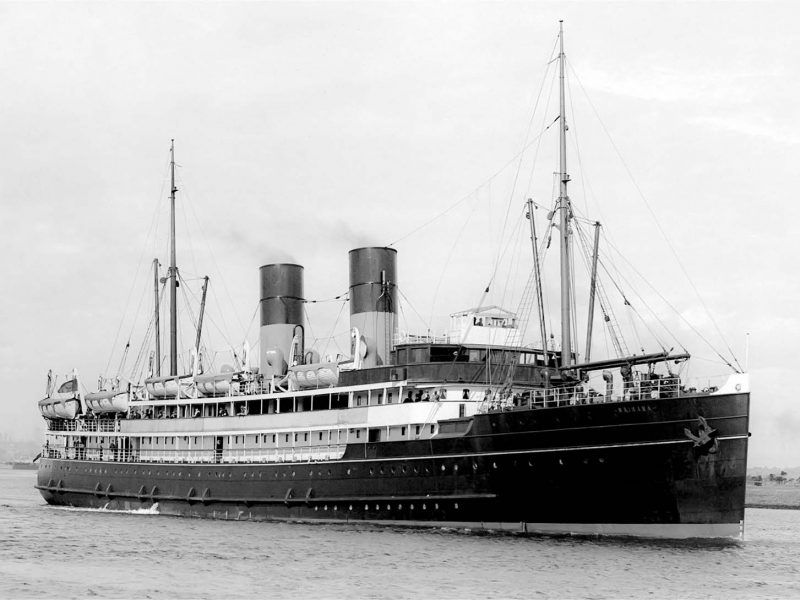
William Holyman & Sons Pty Ltd. of Launceston became half owned by USSNZ in 1962 on their Melbourne and Adelaide to Launceston cargo service, a 25% shareholding having been taken in 1904. The Holyman coasters included Tarrina, Wareatea, Mary Holman and the new motor coaster William Holyman of 1,975 dwt and built in 1961, which remained half owned throughout her long career on the Australian coast. The zinc concentrates trade from Port Pirie in South Australia to the Risdon near Hobart factory of the Electrolytic Zinc Company used Risdon of 5,275 dwt between 1959 and 1975. Risdon unusually had derricks on five masts, and was one of the very few USSNZ ships not to carry a Maori name. Australian aboriginal names were given to the new USSNZ motor coasters Patella and Pateena delivered in 1958/59 for the weekly New South Wales to Tasmania cargo trade, with Kumalla and Kootara of 1957 operating on the iron pyrites trade to Yarraville.
The ro-ro cargo era of USSNZ from Sydney and Melbourne to Hobart began in 1964 with the completion of the ro-ros Seaway Queen and Seaway King at the Whyalla yard in South Australia. They were registered at Hobart and manned by Australian crews in this Australian trade, operating for sixteen years and thirteen years respectively until sold off. The Australian manned USSNZ ships with ‘Seaway’ names continued with Seaway Princess being the name given to a new gas turbine powered USSNZ cargo ship of 6,600 dwt when completed in early 1976 along with her sister Seaway Prince by the Whyalla yard in South Australia and equipped with stern doors and ramps. The pair were manned by Australian crews and operated on Trans Tasman services for only ten years until towed to Kaohsiung for breaking up in 1986, their unusual power plant being the reason for their early demise.

‘All-Red’ Pacific Route To Vancouver
In the days when the map of the world was mostly covered with the red possessions of the British Empire, an ‘All-Red’ route was defined as one by British flag vessels carrying passengers and cargo between British ports, usually on different continents. The ‘All-Red’ submarine telegraph cable via the Pacific to New Zealand was laid in 1902 by two British cablelayers, Colonia completed on the Tyne that year and Anglia, for the Pacific Cable Board across the Pacific from Canada to New Zealand and Australia. Prior to 1893, the only way for passengers to cross from the Pacific coast of Canada or the United States to Australia or New Zealand was to go via San Francisco.
In 1893, James Huddart of Melbourne and his new Canadian Australian Steamship Company, formed by an agreement with Canadian Pacific Steamships, who operated a steamship line from Vancouver to Japan and the Far East, began to operate an ‘All-Red’ route from Sydney to Vancouver. The Huddart steamers Miowera of 3,393 grt built in 1892 on the Tyne by C.S. Swan & Hunter and her sister Warrimoo of 3,528 grt from the same yard, were transferred from Trans-Tasman service to operate a monthly service from Sydney and Brisbane via Honolulu to Victoria (on Vancouver Island) and Vancouver. Canadian Pacific Railways were to act as the agents in Vancouver and Victoria, and Huddart in Hawaii and Australia.
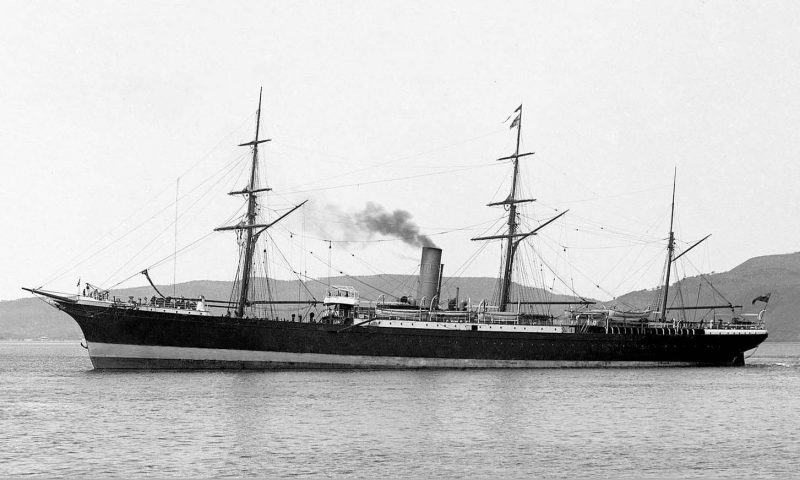
On 18th May 1893, Miowera sailed from Sydney to rousing cheers from onlookers and reached Victoria some 21 days later, again to great celebrations on the quayside, and also at Vancouver. Unfortunately, after two successful round voyages, Miowera grounded on a reef at the entrance to Honolulu on her third northern voyage and was badly damaged. Temporary repairs were made at Esquimalt (Victoria) but she had to make the long voyage back to Tyneside for six months of permanent repairs at the yard of her builder. Warrimoo continued the service in the company of the chartered Arawa of Shaw, Savill & Albion Co. Ltd. until the return of Miowera.
The service was of great benefit to both British Columbia and the east coast of Australia, and a third vessel was required by 1897. The clipper bowed Aorangi of 4,268 grt, her name is Maori for Mount Cook, had been completed on the Clyde in 1883 for the New Zealand Shipping Co. Ltd. service from London to Sydney via the Cape of Good Hope and return via Cape Horn. James Huddart purchased Aorangi for the ownership of a new company, Canadian Australasian Royal Mail Steamship Company, and Aorangi was sent for a six month refit at C. S. Swan & Hunter. She returned with accommodation for one hundred First class passengers and fifty in Second class. Unfortunately the cost of this refit placed James Huddart and his new company into financial problems eight months after its start by Aorangi, Miowera and Warrimoo in May, 1897. The New Zealand Shipping Co. Ltd. took over the route in January 1898 together with the three vessels, and ran the service for three years.
USSNZ took a £100,000 stake in the Canadian Australasian Royal Mail Steamship Company in April 1901 and Aorangi was given a green hull with USSNZ then managing the Vancouver service for the next 13 years. Moana of 3,915 grt, and completed in 1890 for a joint service by USSNZ and the Oceanic Steamship Company of San Francisco, from San Francisco to Auckland and Sydney (see next section) replaced Warrimoo on the Vancouver service. Aorangi, Moana and Miowera then ran together on the Vancouver service from 1901 with a call at Suva on Fiji from March 1902. The twin funnelled turbine propelled Maheno of 5,282 grt was completed for USSNZ by the Denny yard with accommodation for 231 First class, 120 Second class and 67 Third class passengers and made her delivery voyage to Port Chalmers at 19 knots, arriving towards the end of 1905. She had three propellers each driven by a separate steam turbine and was the first turbine propelled ship to cross the Pacific and first arrived at Victoria on 7th May 1906 on the ‘All-Red’ route. She made one more Vancouver voyage in 1906 and then became a regular steamer on the route until the Great War.
Manuka of 4,534 grt was completed by the Denny yard in November 1903 and arrived at Victoria for the first time on 7th June, 1904. However, she was not a regular steamer on the ‘AllRed’ route until 1910, operating instead on TransTasman routes. Marama of 6,437 grt was completed by Caird & Company of Greenock in November, 1907 for the USSNZ as their largest and fastest liner yet. She arrived at Vancouver for the first time on 8th April, 1908 but was then used on Trans Tasman services until becoming the first ship to regularly call at Auckland in 1911 on the ‘All-Red’ route. Marama was a fast ship with a service speed of just over 17 knots and held the ‘All-Red’ speed records in both directions. Miowera was transferred to the Trans-Tasman service of USSNZ in 1908, and another new USSNZ steamer was completed by the Stephen yard on the Clyde as Makura of 8,075 grt to replace her. She had been specially designed for the ‘All-Red’ route, and was an impressive vessel of length 450 feet and a Bridge Deck of length 231 feet and accommodation for 216 First class, 166 Second class and 124 Third class passengers on three decks. She was twin screw and powered by twin 4-cylinder triple expansion steam engines by her builder to give a service speed of 16 knots. She first arrived at Victoria brilliantly floodlit on 15th December 1908 and continued without interruption for the next sixteen years on the route.
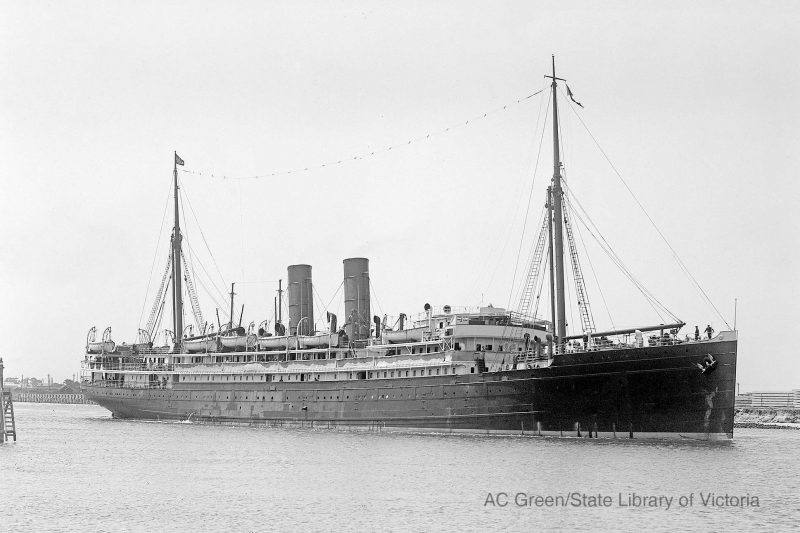
Brisbane was replaced by Auckland as a port of call in 1911 and this caused Australia to withdraw its subsidy, with New Zealand then increasing its share to make the total up to £62,000. Aorangi had been transferred to the Pacific service of USSNZ to San Francisco in 1909 after 55 round voyages on the ‘All-Red’ route. In July, 1910, the new Zealandia of 6,660 grt arrived from the Clyde owned by Huddart, Parker Ltd. of Melbourne and was chartered by USSNZ for the ‘All-Red’ route and sailed from Sydney to Auckland, Suva, Honolulu and Vancouver until March, 1913. All of these new vessels were equipped with the first type of Marconi radio transmitters, which gave a much greater range during the hours of darkness than during daylight, but the next liner completed for the route in 1913, Niagara, was fitted with a more powerful Marconi radio transmitter, and was able to keep her Master informed from Head Office as well as transmit messages of importance to Dunedin and later Wellington from a range of six thousand miles away at Vancouver.
The twin funnelled Niagara of 13,415 grt was completed by the John Brown yard at Clydebank for USSNZ, and arrived in New Zealand waters for the first time in May 1913. She was soon to earn the nickname of ‘Queen of the Pacific’ and was the only USSNZ vessel to be given a North American name. She was greeted by brass bands and thousands of spectators at both Victoria and Vancouver, where she arrived on 28th May 1913. She had been designed to match any other equivalent sized liner in the world with a length of 524 feet, breadth of 66.3 feet and a very long combined bridge deck and poop deck. She had accommodation for 704 passengers, with 290 in First class, 223 in Second Class, and 191 in Third class on four decks. She was a triple screw vessel powered by two quadruple expansion steam engines on the outer screws, and a low pressure exhaust turbine on the center screw to give a service speed of 17 knots. She was the first British oil burner with the first Board of Trade certificate to burn oil in her eight boilers. Canadian Pacific Steamships paid cash for a minority interest in her to protect their interests plus sole Canadian representation which gave the route a valuable boost for traffic from Europe and Eastern Canada.
Niagara was equipped with hydraulic cranes to unload her 7,600 tons of cargo including refrigerated cargo stored in four cooled compartments. She was an impressive vessel with a counter stern, and her later sister Aotearoa was given a cruiser spoon stern, but unfortunately never sailed the ‘All-Red’ route as she was completed as an auxiliary cruiser in June, 1915 and was lost on Admiralty service on 14th July 1917 while returning to Scapa Flow from her Northern Patrol duties with the loss of one crew member. Niagara continued on the ‘All-Red’ route throughout the long years of World War I in the company of Makura, both being equipped with powerful Marconi radios in case they were intercepted by German raiders.
USSNZ was taken over by P. & O. on 28th November 1917 on a cash and share basis, the New Zealand Shipping Co. Ltd. having also been taken over in 1916. This led to anger among New Zealanders that the vast majority of their ships were now controlled from London, even if the P. & O. as per usual retained all directors in their same headquarters and asked for only ‘matters of importance’ to be referred to London. However, this was never exactly spelt out and remained a bone of contention with the two New Zealand companies on the other side of the world. USSNZ lost eight vessels of 54,712 grt during the war, but still had a big fleet left in 1920 of 82 vessels of which 32 were of over 3,000 grt. The vast majority of the fleet were engaged on Trans-Tasman services and on the plethora of passenger and cargo services in coastal New Zealand waters.
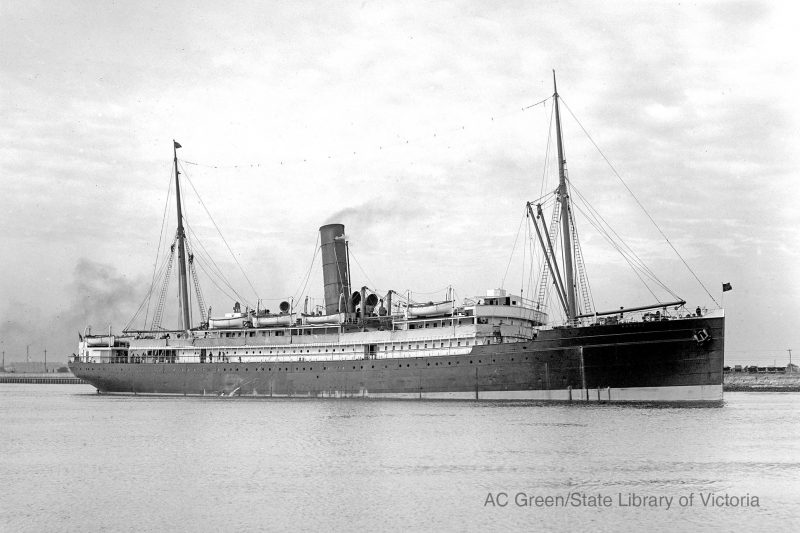
USSNZ placed an order for an even bigger twin funnelled liner for the ‘All-Red’ route in September, 1922 with the Fairfield yard at Govan on the Clyde. She was launched on 17th June 1924 as Aorangi (2) of 17,491 grt by the wife of Sir Charles Holdsworth, Managing Director of USSNZ, and was completed in December 1924 as a replacement for Makura. She was the first motor liner for the Pacific with four 6-cylinder Sulzer two stroke single acting diesels by her builder, which produced 14,500 bhp on trials and 13,000 bhp when in service at her normal speed of 17 knots. She had four propellers, as although the development of the diesel engine at this time was rapid, four sets of diesels were required in order to obtain the necessary power. She had dimensions of length 580 feet by breadth of 72.2 with a draft of 30 feet and a long Promenade Deck of length 419 feet.
Aorangi (2) had six passenger decks for her cabins and public rooms, with the Promenade Deck containing all of the public rooms except for the First class Dining Room. At the forward end of Promenade Deck was the Music Room decorated in Louis XVI style with French walnut furniture, followed by the First class Lounge, verandah café, children’s play room, library, and smoking room. The latter was finished with Jacobean style antique oak wall decoration and furniture, with heraldic shields and swords on display and a stone fireplace lit by an electric fire. The First Class Lounge was the ‘piece de resistance’ of the ship, and rose over two decks to a gallery on the Boat Deck, with a viewing balcony half way up at one end, and decorated in Louis XVI style with a skylight between her two funnels. The Second class public rooms were aft on the Promenade Deck, with the barrier between First and Second class rooms lifted in the evening so that all could dance to the music of the ship’s orchestra. Forward of the First Class Lounge were eight luxury First class staterooms with marble lined bathrooms and separately decorated in Sheraton, Regency, Queen Anne, Elizabethan, Louis XVI, Adam, Victorian and Empire styles.

The First Class Dining Room of Aorangi (2) was on the Upper Deck and its entrance was in Louis XVI style with grey panelling leading to a lavishly decorated room with walnut veneered tables, chairs and furniture, a gilded balustrade at the far end, wall mirrors and a non slip rubber coated floor. A Cloak Room and a shop for newspapers was adjacent to the First class Dining Room. Aorangi (2) had accommodation for 970 passengers, with 440 in First class, 300 in Second Class and 230 in Third Class, with the First and Second class cabins distributed equally over the Upper and Shelter Decks, with the Third class accommodation and part of the crew cabins forward on Shelter Deck. There were 48 single berth First class cabins, 167 two berth First class cabins and the remainder of First class passengers were in three berth cabins. Modern features in some First class cabins were telephones and American style soda fountains to make her Canadian and American passengers feel at home. On Boat Deck forward were located the Master’s suite of rooms and the Navigating Officers accommodation, with the Engineer Officers accommodation ‘midships, together with a gymnasium just aft of the First Class entrance and next to the wireless room, the emergency dynamo room and the ship’s hospital aft. Aorangi (2) had two well spaced ‘steamer’ type funnels above Boat Deck and was a very impressive vessel that could also carry 8,345 tonnes of cargo in her holds, handled through eight hatches by seventeen derricks on two masts and three sets of posts.
Aorangi (2) sailed from Southampton under the command of Capt. Robert Crawford on her maiden voyage to Vancouver on 3rd January 1925 calling at Jamaica, the Panama Canal, and was the first motor liner to pass under the famous Golden Gate Bridge into San Francisco harbour. She began her Trans-Pacific service with a first sailing from Vancouver on 6th February for Suva and Auckland, arriving on 24th February. She ran virtually trouble free in the inter war years in company with the liner Niagara across the wide Pacific, but the pair ran at a financial loss due to the American Government subsidies given to the big liners of the Matson Line. In July, 1931, the USSNZ pair were transferred to Canadian registry and the Canadian Australasian Line on its formation that month, with Canadian Pacific Steamships taking a half interest in both ships. Increased Dominion Government mail subsidies were made available during and at the end of the Depression years in order to compete with Matson Line. Aorangi (2) underwent a major refit at Sydney in 1938 during which her passenger accommodation was reduced to 248 in First class, 266 in Second class and 125 passengers in Third class.
On the outbreak of World War II, Aorangi (2) contined in regular service with Niagara for 18 months but carried R.A.F. pilot trainees to Canada across the Pacfific and took the first New Zealand garrison troops to Fiji. In September 1941, she was taken on charter as a troopship by the Ministry of War Transport on worldwide service, with many of her long voyages lasting six months without overhaul, but she never broke down. In February 1942, she assisted in the evacuation of women and children from Singapore, which surrendered on 15th of that month. In readiness for the Normandy landings, she was fitted out as an accommodation and mother ship for the 150 tugs used to tow caissons over the Channel. She also held the rota of relief crews to man the small craft aboard which there was no accommodation. While anchored in the Solent, the first D-Day wounded came to her, and she also had on board 1,200 relief personnel. She moved back to the Pacific in 1945 and was fitted out as the Flagship to the Pacific squadron of the Royal Fleet Auxiliary. In July 1945, she became the Far East accommodation ship at Manus Island in New Guinea, and was then based at Hong Kong until returned to her owners in April 1946.
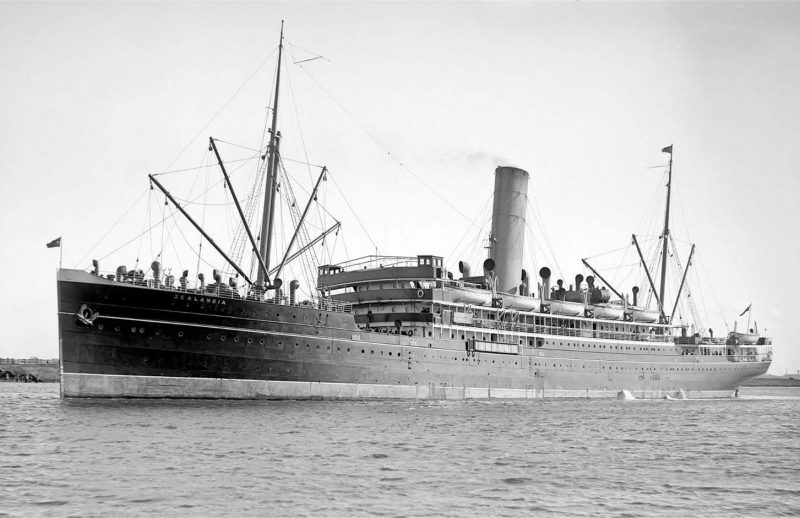
Niagara was not so lucky when she sailed from Auckland for Suva and Vancouver on 18th June 1940. She had on board half of the New Zealand stock of small arms ammunition bound for England after Dunkirk, as well as a large quantity of gold bullion valued at £2.5 million and loaded in 295 boxes of two bars each. At 0300 hours of the next day on a calm night, she entered Hauraki Gulf and struck a mine off Bream Head, Whangerei and began immediately to settle by the head and sank at 0530 hours in 430 feet of water. The mines had been laid by the German raider Orion (ex Kurmark of Hapag), which also caused the loss of Port Bowen of Port Line and Baltannic of United Baltic, as well as three minesweepers sent to re-open the route.
All of the passengers and crew of Niagara survived and were picked up by Wanganella of Huddart, Parker of Australia and landed at Auckland, but her cargo was very important and salvage was begun on 2nd February 1941, when the wreck was located by the specially fitted out coaster Claymore of the Northern Steamship Co. Ltd. She carried grabs and a diving bell and was positioned and anchored directly above the wreck. Divers then blasted a hole in the hull outside the strongroom, with debris removed and the passage ways shored up. The work could only be carried out in calm seas and for the twice daily periods of slack tide, as at all other times the divers were carried off course by the current. Some 277 boxes out of 295 had been recovered by 4th December 1940 plus one loose bar, and work was then suspended on the news that Japan had entered the war by the attack on Pearl Harbour.
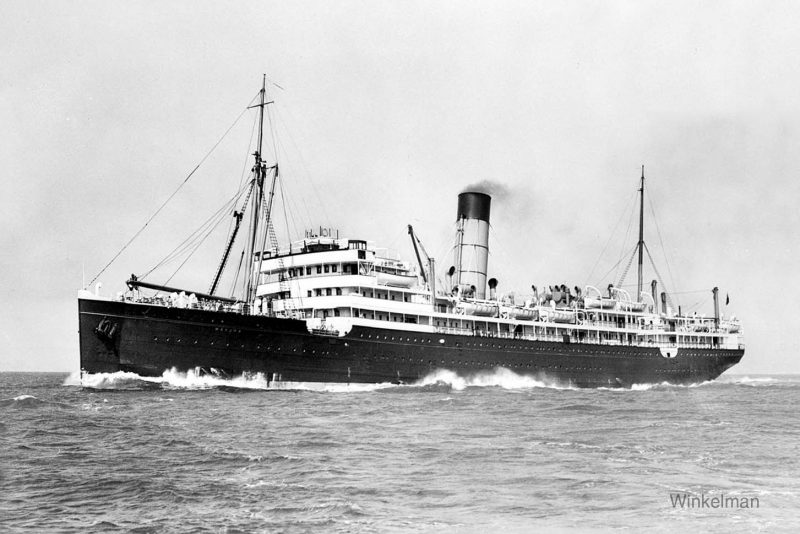
In August 1953, the salvage vessel Foremost 17 of Risdon, Beazley returned to the site and recovered a further 30 bars leaving only five unaccounted for Aorangi (2) was reconditioned at Sydney during 1946/48 at a cost of £1 million and her accommodation reduced to 212 First class passengers, 170 in Cabin class, and 104 in Third class. She sailed from Sydney with a white hull and a thin green band for her first post war Trans-Pacific voyage on 19th August 1948 for Auckland, Fiji, Honolulu, Victoria and Vancouver and receiving a rousing welcome in both British Columbian ports. However, after only two voyages with a white hull the cost of upkeep was too much, and she was repainted with a bronze green hull with a yellow line. Despite having a $400,000 annual subsidy provided two-thirds by the Canadian Government, and one-third by the New Zealand and Australian Governments, she was still loss making.
In February 1951, Aorangi (2) was laid up for two months during the Pacific ‘off season’ while funding was discussed. While berthing at Victoria on 7th June 1952, she was in collision bow first with her jetty causing serious damage above and below the waterline, which was repaired. However, her pioneer diesel engines were showing serious signs of wear, and it was for this reason rather than Government discussions for funding that finally sealed her fate. She arrived at Sydney on 9th June 1953 for the last time at the end of round voyage 87 with 366 passengers. She was sold for breaking up at Dalmuir and left Sydney nine days later, and arrived in the Clyde on 24th July 1953 after a career of 29 years since leaving the Clyde in 1924.
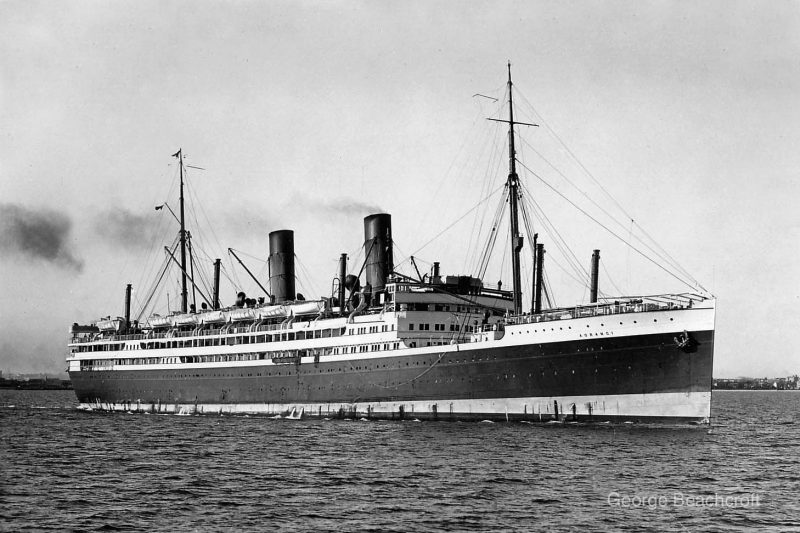
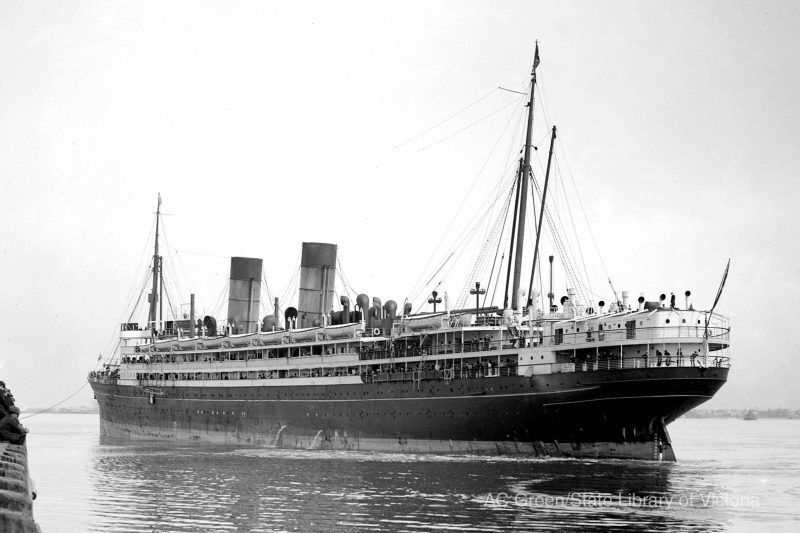

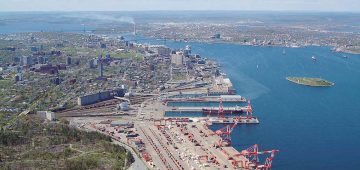



Comments
Sorry, comments are closed for this item